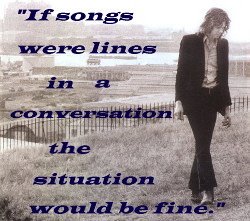"There's no such thing as objectivity."
 A Black Panther demonstration on July 30, 1968, at the Alameda County Courthouse in Oakland during Huey P. Newton’s trial.
A Black Panther demonstration on July 30, 1968, at the Alameda County Courthouse in Oakland during Huey P. Newton’s trial."Pirkle Jones, a California photographer admired for his stirring images of migrant workers, endangered landscapes and social movements, including a controversial series on the Black Panthers at the height of their activism in the late 1960s, died March 15 in San Rafael. He was 95.
His best-known work includes a collaboration with (Dorothea) Lange called "The Death of a Valley 1956," which portrayed the Berryessa Valley in Napa County during the year before completion of the Monticello Dam that flooded the valley; "Walnut Grove 1961," a series Jones shot with his wife, Ruth-Marion Baruch, which documents a dying Sacramento River town; and "Black Panthers 1968," also in collaboration with Baruch, which caused a furor for its sympathetic view of the black power movement.
According to Wride, Jones and his mentor disagreed about the extent to which political concerns entered into Jones' art, but Jones saw the simple act of taking a photograph as a political act. "There's no such thing as objectivity," he once explained in an interview.
Jones, who with his wife belonged to the Peace and Freedom Party, made no secret of the fact that his purpose in photographing the Black Panthers was, as he told the San Francisco Chronicle in 2002, "to show them the way we saw them -- as human beings."
During the four months in 1968 that he and Baruch focused their lenses on the radical group, they produced a number of emblematic shots from the campaign to free Huey P. Newton, the Panther leader who was facing voluntary manslaughter charges for the murder of an Oakland police officer.
The Panther photographic essay caused an uproar; even Adams advised Jones to drop the project. The controversy almost caused San Francisco's De Young Museum, which was mounting them in a show, to cancel the exhibition, but after union leaders and art critics intervened, the museum went ahead with its plans. The show drew 100,000 visitors.
"I had professional clients who said, 'What in the world are you doing photographing Panthers?' I'd just sort of shrug my shoulders. I did not make a big speech about it. I did the talking through the photographs.""
 Huey P. Newton and attorney, Charles R. Garry, at the Alameda County Courthouse Jail, Oakland, CA 26 Sept 1968.
Huey P. Newton and attorney, Charles R. Garry, at the Alameda County Courthouse Jail, Oakland, CA 26 Sept 1968. SIDE NOTE: Mr. Newton, kids, is swagger in the form of a human male. SWAG-GERRRRR.
Wayne, Officer Rick, every Dipset-er, T.I.:
Until you get your Karl Marx and Frantz Fanon and CA Penal Code game tight,
become the Minister of Defense for anything,
start community outreach programs,
then get try to get done in by COINTELPRO,
then get your murder case dropped...
please see yourselves out.








No comments:
Post a Comment